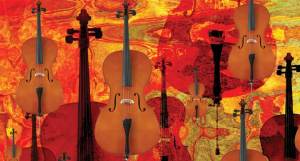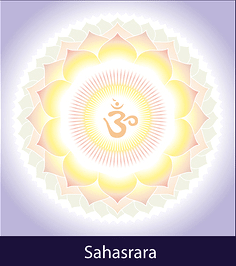38 Beautiful and Easy Student Concertos for Violin (free sheet music!)
My top 3 easy violin concertos as a violin teacher
Develop your musicality and technique with the most beautiful violin student concertos or enjoy listening to them
Scroll down to see my full list with 38 easy violin concertos in the first position including free violin sheet music.
After 1 or 2 years of violin lessons, you probably finished your first beginner method book and you can start playing easy concertos.
Student concertos for violin are composed in a way that you can play them in the first position with very basic technique, but they have beautiful melodic lines.
In a beginner method book you play short pieces and often children’s songs and folk tunes. I student concerto is a lot longer and you’ll be practicing it for a while before you can perform it. Practicing them you’ll improve your playing technique on the violin and your musicality and expression in making music.
For adults it’s often a relief when they can finally play a beautiful classical piece instead of the sometimes childish tunes for their beginner books.
Student concertos and concertinos are ideal to play in a violin student’s concert.
My young and adult violin students love performing them.
The student concertos I mention in this article are often played by my students in my violin studio. In a student performance they can make a big impression when accompanied by a pianist. After hard practice it’s great to play them for family and friends.
Student concertos have, just as usual classical violin concertos, three movements: a first movement with a beautiful melody, a more romantic and slow second movement and an impressive third movement.
Are you reading this and are you not up to playing a student concerto? Then just enjoy the recordings and practice hard… who knows how quickly you can play them!
1) Concertino in G major opus 11 by Ferdinand Küchler
I think about everybody who plays the violin, has played this piece in the past. It’s often the first concerto you’ll play. It’s very simple and a good first step in playing longer pieces after your first method book. When played very stalwartly with beautiful phrasing, you can make a big impression on your audience.
When can you start playing this concertino?
When you know the high and low second finger and therefore can play the G major two octave scale on the violin, you can start practicing this concerto. There are some other fingerings, but not many, so you can learn them while studying this piece. Everything is in the first position.
Sheet music
Click here to download the sheet music with the violin part and the piano accompaniment.
Would you like to learn to play this piece?
I’ve made extensive instruction video violin lessons for this concert in my online violin studio, the Violin Lounge Academy. Click here to check it out and enroll!
Join my FREE beginner violin course
I take you from scratch step by step to your first violin concerto including 40 videos, sheet music and violin tabs.
2) Concerto in b minor opus 35 by Oscar Rieding
Beautiful melodic lines and a flashing third movement characterize this concerto. The third movement makes me think about a gypsy party. My students tend to start playing this concerto after Küchler opus 11. It’s all in first position, but it’s a bit harder. The minor key might be something you have to get used to and there are a bit more alterations (changes in finger positions between high and low).
When can you start playing this concerto?
This concerto is a bit more difficult than Küchler opus 11 or the Indian Concerto by Perlman (also nice!), so I would advice to study this concerto when you’ve already played a student concerto before. It’s all first position, but the intonation (hitting the right notes and playing in tune) is a bit more difficult and there are some more alterations.
When you are learning from a part two or three from a violin method book like Sassmanshaus, you can start playing this concerto.
With this concerto you can improve fluency in your bowing technique, phrasing (making musical sentences) and musicality in general.
Sheet music
Click here to download the sheet music with the violin part and the piano accompaniment.
Would you like to learn to play this piece?
I’ve made extensive instruction video violin lessons for this concert in my online violin studio, the Violin Lounge Academy. Click here to check it out and enroll!

Hi! I'm Zlata
Classical violinist helping you overcome technical struggles and play with feeling by improving your bow technique.
3) Concertino in the style of Mozart by Hans Millies
Are you learning to play the violin for about two years and do you love Mozart? You’ll definitely enjoy practicing and playing this concertino by Millies. It has the sparkly and transparent character of Mozart’s music. This concertino is a great preparation to playing Mozart’s violin sonata’s and violin concerto’s later on.
When can you start playing this concerto?
This concerto is a bit more difficult than Küchler opus 11 or the Indian Concerto by Perlman (also nice!), so I would advice to study this concerto when you’ve already played a student concerto before. It’s all first position, but the intonation (hitting the right notes and playing in tune) is a bit more difficult. Also the intonation is very ‘open’ just like the real Mozart (open means that people can hear it right away when you’re just a little off… this is because of the way it’s composed). Also there are some more difficulties in terms of rhythm and bowing technique.
With this concertino you can develop clarity in your bowing technique (and learn spiccato), trills and playing in tune. It’ll prepare you to play real works of Mozart like his violin sonata’s and violin concerto’s. You can already learn the playing technique necessary to playing works from the classical era.
Just like the ‘real’ Mozart it’s not very hard to play this concertino for 80%, but if you really want to play it cleanly and musically, it’ll cost you some effort.
Fun detail: this concertino has a real cadenza! You’ll feel like a real concert violinist.
Sheet music
Complete 38 easy 1st position student concertos
You’ll never be bored with this complete list of violin concertinos that are also in the first position and easy to play for beginner violinists.
Click here to download the FREE sheet music for ALL of these student violin concertos.
- Beer, Op.47
- Beer, Op.81
- Brown, Op.10
- Brown, Op.11
- Brown, Op.13
- Essek, Op.4
- Huber, Op.7
- Huber, Op.8
- Huber, Op.11
- Huber, Op.30 (2 vln)
- Huber, Op.36
- Járdányi
- Jockisch, Op.6
- Küchler, Op.11
- Küchler, Op.14
- Mendelssohn, L., Op.213
- Millies, Style of Mozart
- Mokrý, in G major
- Portnoff, Op.9
- Portnoff, Op.13
- Portnoff, Op.18
- Rago
- Rieding, Op.34
- Rieding, Op.35
- Rieding, Op.36
- Röntgen, Op.85
- Röntgen, Op.88
- Sartorio, in C major
- Sartorio, in F major
- Schmidt, Op.54
- Seitz, Op.13
- Seitz, Op.22
- Sitt, Op.93
- Söchting, Op.95 (2 vln)
- Söchting, Op.138 No.1
- Szerémi, Op.63
- Veit, Op.25 (open strings)
- Yanshinov, Op.35
Ready for the next level?
If you’re already introduced to position play, check out these intermediate concertos.
What’s your favorite easy violin student concerto?
Did this article fill you with nostalgia thinking back to the early years of your violin playing? Or has this article inspired you to start playing your first student concerto? Or did you just sit back and enjoy listening to the recordings? Do you have another easy violin student concerto you can recommend to others? Share it in the comments below. I’m looking forward reading your response to this article.


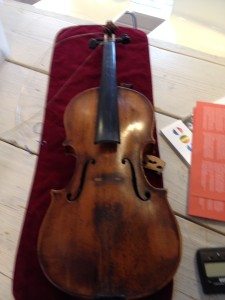 A man came into my violin shop with his granddad’s violin. His granddad played in the Royal Concertgebouw Orchestra his entire life during the first half of the 20th century. It was a German violin from 1840. The instrument had not been played on for almost half a century.
A man came into my violin shop with his granddad’s violin. His granddad played in the Royal Concertgebouw Orchestra his entire life during the first half of the 20th century. It was a German violin from 1840. The instrument had not been played on for almost half a century.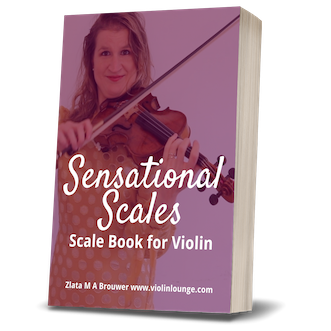
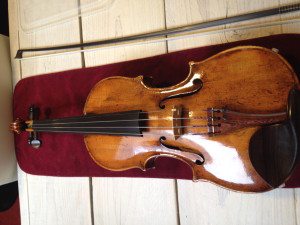 I went to a luthier and had it repaired. In this article you can see the before and after picture.
I went to a luthier and had it repaired. In this article you can see the before and after picture.